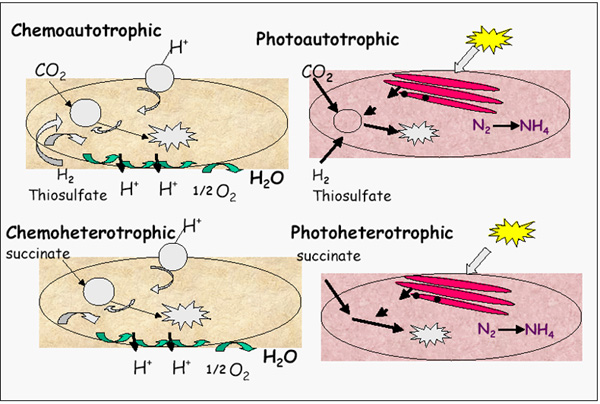S
secondtry
Hey guys,
I have studied PnSB on and off for years, and I have personally isolated them and cultured them from the wild many times. AFAIK I am the first to the this with basic items in a DIY fashion. In nature PnSB are most commonly found active in anaerobic conditions, i.e., moist soil/swaps/wetlands, and about 5-10 inches below water and in the mud/gunk at bottom of water, PnSB are at that level floating in water (and in mud) so they can still get sunlight but are in as low O2 environ as they can find (within reason).
PnSB are tough and they can live in environments with low O2, but are after all they are anaerobes (yes I know what facultative means ) and they do best in low O2 environ. Besides, this isn't my main reason to say don't extend AEM into AEM; it's just a secondary reason and important (yet partial) cause of low PnSB numbers.
) and they do best in low O2 environ. Besides, this isn't my main reason to say don't extend AEM into AEM; it's just a secondary reason and important (yet partial) cause of low PnSB numbers.
I am gonna shut up now until we have some plate counts.
I have studied PnSB on and off for years, and I have personally isolated them and cultured them from the wild many times. AFAIK I am the first to the this with basic items in a DIY fashion. In nature PnSB are most commonly found active in anaerobic conditions, i.e., moist soil/swaps/wetlands, and about 5-10 inches below water and in the mud/gunk at bottom of water, PnSB are at that level floating in water (and in mud) so they can still get sunlight but are in as low O2 environ as they can find (within reason).
PnSB are tough and they can live in environments with low O2, but are after all they are anaerobes (yes I know what facultative means
I am gonna shut up now until we have some plate counts.



